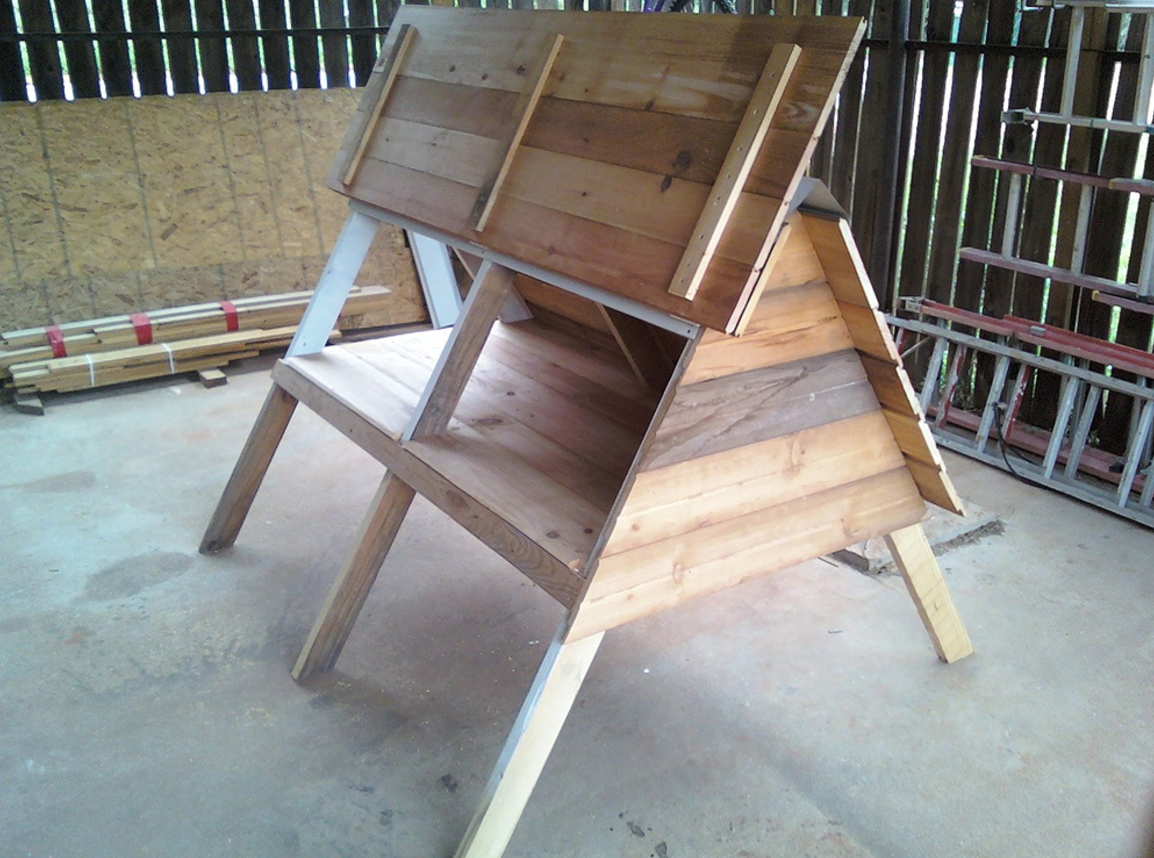Mobile Chicken Coops
Backyard or Barnyard? Are Mobile Chicken Coops Right For You?
If you’re considering building a chicken coop, bigger isn’t always better. Mobile chicken coops are the newest trend popping up in backyards nationwide. You can find these portable solutions from small farms to more urban settings. In fact, the New York Times even reports a growing poultry population in New York City! If you’re considering building a coop, you’ll need to weigh the pros and cons of going mobile. From hammers to hens, here are the basics you need to know.
The Pros of Mobile Chicken Coops
They’re often easier and less expensive to build.
Because they’re smaller, mobile coops are perfect for the DIY crowd. You can find hundreds of different plans online, and they can often be made with materials you readily have available. A quick online search shows that people have built portable coops for as little as $50. So right out of the gate, cost and simplicity will get your poultry plans off on the right foot.
They make feeding time a breeze.
Once you have the coop in place, the benefits continue with the daily feeding. Tractor Supply Company estimates that an average laying hen can eat up to one-fourth of a pound of food each day. Since it’s recommended that you keep a constant supply of food available, this can mean a lot of trips back and forth for you! By having a mobile coop, you’re able to move it closer to your home and save yourself steps along the way.
They’re easier to clean.
After eating all that food each day, there’s always cleaning to be done. Especially if your chickens will be in a fairly small space or in a backyard environment, it’s critical to clean the coop regularly. If it’s on wheels, just move it near your water source for a quick and easy solution. You could also choose to move it near a ditch or a part of your yard you wish to fertilize.
The Cons of Mobile Chicken Coops
There can occasionally be durability issues.
Anyone who has kids (and their toys) knows that the more moving pieces a thing has, the more likely it is to break. Those same components that allow you the flexibility and convenience above can cause problems with durability. This doesn’t have to be a show-stopper, though. If you build it yourself, be sure to invest in quality materials and take your time to ensure solid workmanship. If you’re purchasing from a third party, just carefully review the layout and be sure that all moving pieces are in good shape.
You’re limited in space.
With mobility also comes a cap on space. The larger your unit, the more difficult it will be to move. Depending on your environment, this may or may not be a problem. If your chickens are free-range and essentially just use the coop at night, Living Home Grown suggests you only need three or four square feet per bird. However, if your chickens will spend most of their time inside, then that goes up to 10 square feet each. At that size, a mobile coop could become unmanageable quickly.
When you’re making the decision about what type of coop you want, be sure to consider each of these factors. Mobile coops can be the perfect solution for small numbers of chickens in a backyard environment. But if you have space and are looking for a larger flock, then perhaps a traditional coop would serve you better. Whether you choose backyard or barnyard, consider these pros and cons before deciding if a portable coop is right for you.


